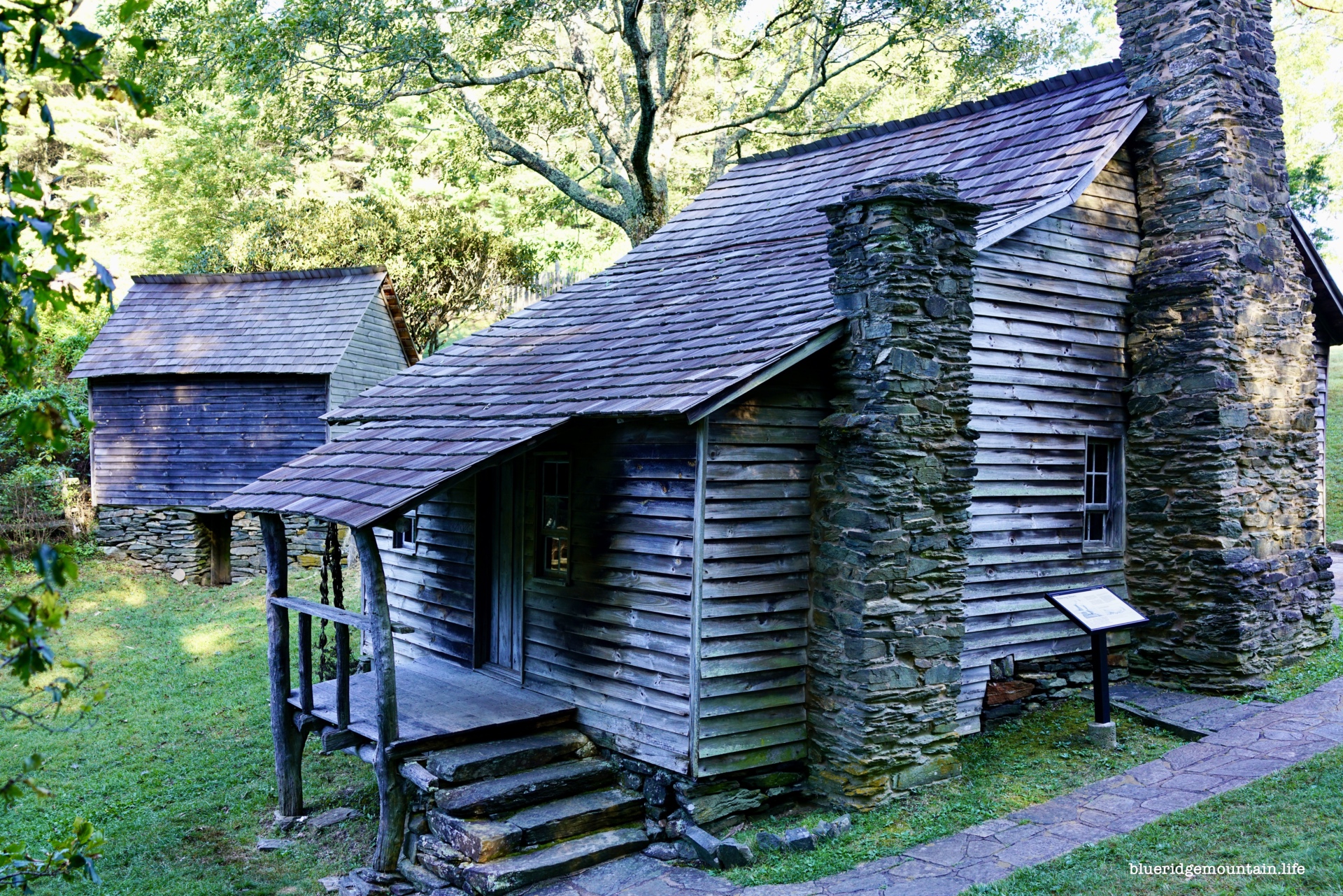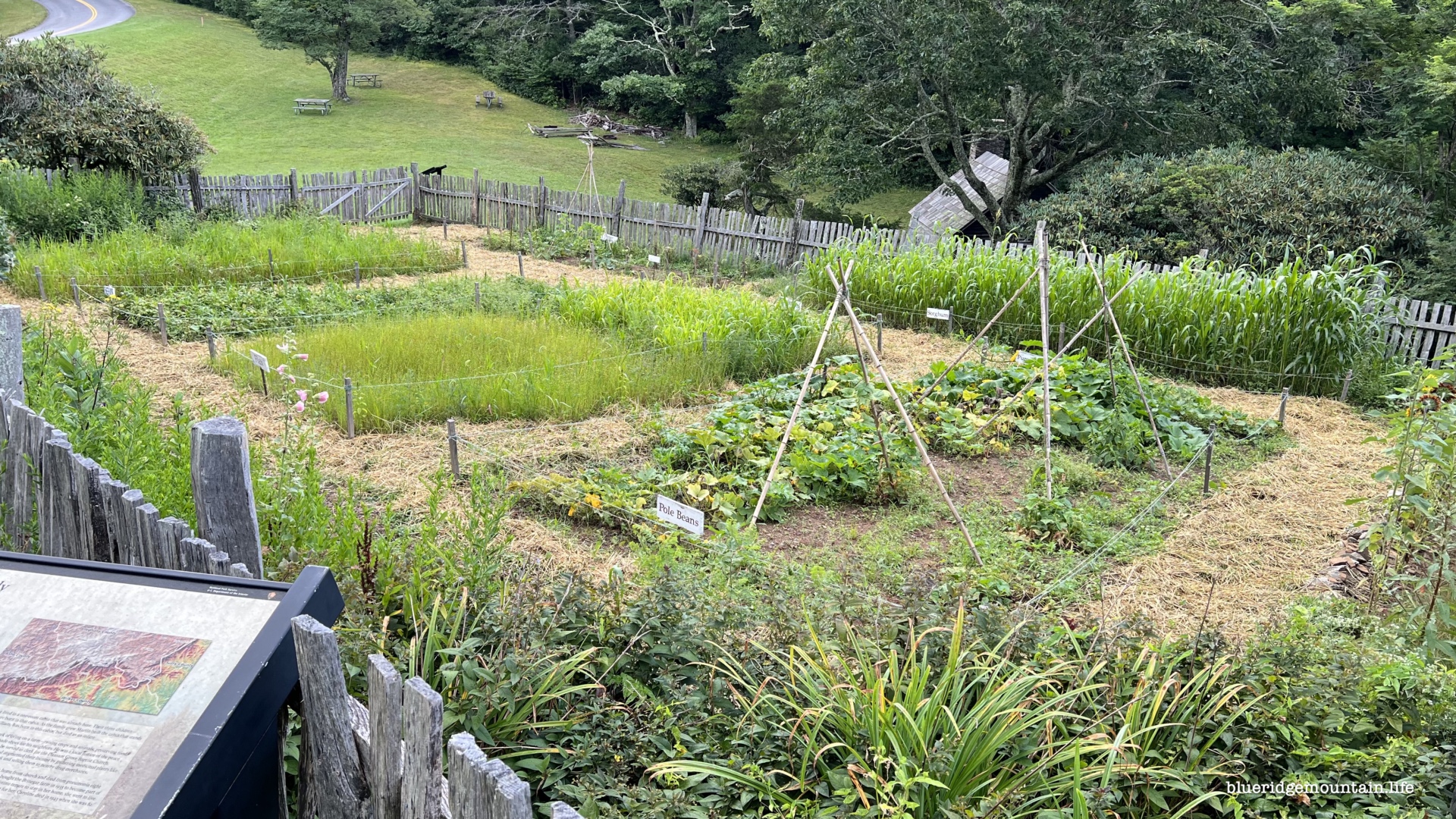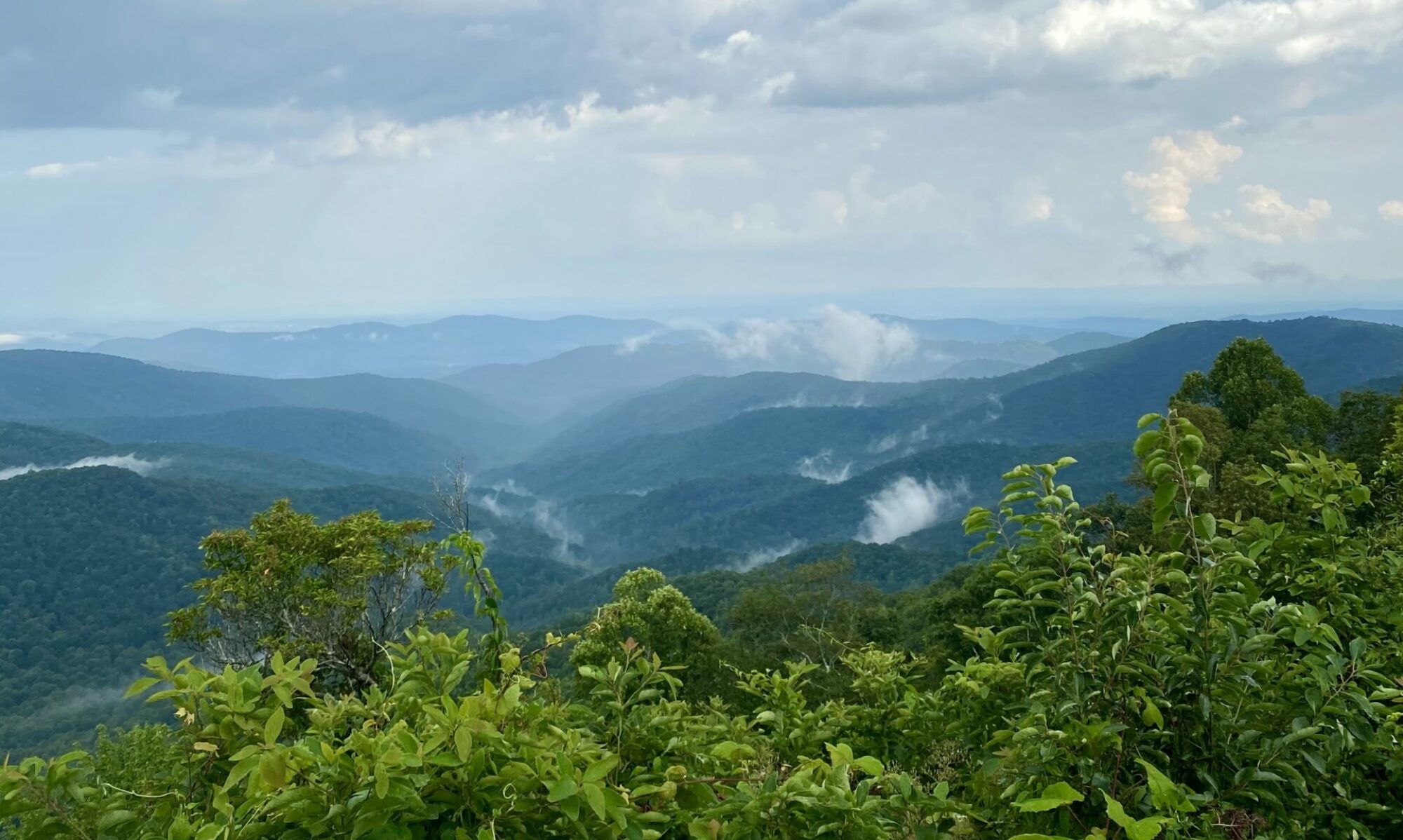The Brinegar Cabin at Doughton Park is an unassuming little structure, a window into a bygone era, a time when life was simpler, and hard.

Built by Martin Brinegar in the 1880’s over a three year span, it was made from chestnut logs, sturdy and unpretentious. It’s a testament to his craftsmanship that the cabin still stands today, albeit with a bit of help from the National Park Service.
Martin and his wife, Caroline, raised their three children in the small cabin. Together they faced the unpredictable nature of the mountains.
Caroline was a woman of many talents. Not only did she manage the household and raise the children, but she was also an accomplished weaver. Visitors to the cabin today can still see her original loom, a contraption of wood and strings that looks more like a medieval torture device than a tool for making cloth. But under Caroline’s skilled hands, that loom was not just a tool; it was a lifeline, a means of survival. She augmented their income by gathering medicinal plants like bloodroot, snakeroot, and black cherry bark and selling them to nearby drug merchants.

The Brinegars were subsistence farmers, eking out a living from the rocky Appalachian soil. They grew corn, beans, and other staples, like flax and sorghum, and kept a few animals for milk and meat. Life was not easy, but it was honest. Every meal, every piece of cloth, every warm night by the fire was earned.
Today, the Brinegar Cabin stands as a testament to the resilience and ingenuity of the Appalachian people. It’s a place where you can step back in time, feel Martin’s rough-hewn handywork, and imagine the sound of Caroline’s loom or the smell of sorghum syrup on a billowy biscuit.
+++
More videos of Doughton Park
in the next few days.
+++
